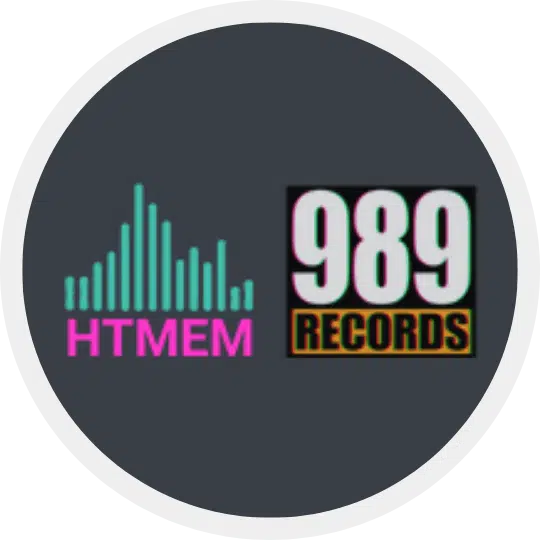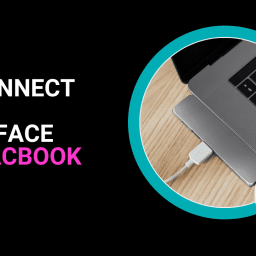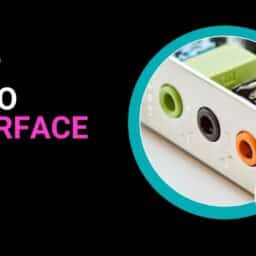Are you a musician looking to record music at home? Are you tired of dealing with poor sound quality from your built-in computer microphone or struggling with complicated recording setups? Then it may be time for you to invest in a USB audio interface.
What is a USB Audio Interface?
A USB audio interface is an essential audio device that bridges your computer and various audio sources, such as microphones and instruments, enabling you to capture high-quality sound. It transforms analog signals into digital formats that are understandable to your computer.
This device is indispensable for musicians, podcasters, and streamers aiming to produce superior audio recordings.
Benefits of Using a USB Audio Interface
Enhanced Sound Quality: USB audio interfaces deliver superior audio quality over standard built-in computer sound systems. They allow users to record high-quality audio, which is essential for creatives such as musicians, podcasters, and filmmakers.
Greater Flexibility: These interfaces enable the connection of multiple microphones, instruments, and various audio inputs directly to your computer.
Portability: Designed to be compact and lightweight, USB audio interfaces offer ease of transport for on-the-go recording.
Broad Compatibility: USB audio interfaces boast widespread compatibility with the majority of computers and recording software, ensuring a seamless integration into your existing setup.
Key Features to Consider When Choosing an Audio Interface
Let’s now understand something more about the features you should consider when searching for your next USB audio card.
Audio Quality
Seek out an interface equipped with top-notch preamps and converters for crystal-clear and precise sound quality. Evaluate the interface’s frequency response, signal-to-noise ratio, and dynamic range for optimal performance. Also, confirm that the interface can handle high-resolution audio formats, including 24-bit/192kHz, to ensure superior sound fidelity.
Connectivity and Compatibility
Examine the connectivity options of the interface, including USB, USB-C, or MIDI, to ensure compatibility with your computer and recording software. Assess the necessary number of inputs and outputs, such as microphone, instrument, and headphone jacks, to meet your recording needs.
Power and Portability
Evaluate the interface’s power needs, including USB bus power or an external power source. Opt for a design that’s both compact and lightweight to ensure portability. Additionally, verify whether the interface offers a battery-powered feature for mobile recording capabilities.
Types of USB Audio Interfaces
Two-channel USB interfaces are perfect for solo artists or podcasters needing to capture one or two audio sources.
Multi-channel interfaces cater to bands or producers who require the capability to record several audio sources at once.
Portable interfaces offer a compact and lightweight solution for recordings on the move.
Studio-grade interfaces represent the pinnacle of design, tailored for the demanding environment of professional recording studios.
How to Choose the Best USB Audio Interfaces for Your Needs
First, establish your budget and identify the essential features you require (for example number of INs and OUTs) for recording audio. Then, explore various interfaces available on the market and I strongly suggest you consult reviews from other users to gauge their experiences.
Next, compare the features and specifications of each interface to find the one that best suits your needs. Finally, ensure the interface you choose is compatible with your computer and recording software.
Top Picks for Different Use Cases
✅ For Musicians
Focusrite Scarlett 2i2
A popular and highly-regarded interface for musicians who need high-quality audio and a user-friendly interface. It features a dedicated instrument input, which is essential for recording instruments like guitars and basses. Check The Site
Universal Audio Volt
A compact and portable interface that offers high-quality audio and a vintage sound. The Universal Audio Apollo Twin, known for its advanced DSP technology and professional recording features, is another excellent option. Check The Site
✅ For Podcasters
Blue Microphones Yeti
A popular and highly-regarded USB microphone that offers good sound quality and a simple design. Check The Site
Rode NT-USB
A studio-grade USB microphone that offers high-quality audio and a warm sound. Check the Site
Additionally, consider the classic Shure SM7B, a top choice for many vloggers and podcasters..
✅ For Streaming
Rode RodeCaster Pro
A studio-grade interface that offers high-quality audio and a range of features for streamers. Check The Site
Frequently Asked Questions
What is the best USB audio interface for recording high-quality audio?
Refer to the above list for a detailed overview of the best USB audio interfaces. When selecting an interface, consider the variety of audio devices available. These devices often come with features like digital inputs, outputs, and software compatibility, which significantly impact their usability and performance for recording and production tasks.
How do I choose the best USB audio interface for my needs?
Take into account factors such as audio quality, compatibility, inputs, and outputs, along with your specific recording requirements and budget.
What are the key features to consider when choosing a USB audio interface?
Important factors to evaluate include audio quality, connectivity, and compatibility, as well as portability.
Can I use a USB audio interface with my computer and recording software?
Yes, most USB audio interfaces are compatible with both Mac and PC computers, as well as a variety of recording software programs. However, it’s always important to double-check the compatibility before making a purchase.
Conclusions
Choosing the right USB audio interface for your needs can be overwhelming but by considering your budget, desired features, and use case you can find the one that’s right for you. Research, read reviews, and compare features and specs to make an informed decision. With the right USB audio interface, you can record great audio and take your music to new levels.
Suggested Readings
Practice and Enjoy!











